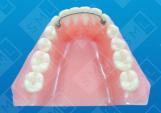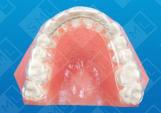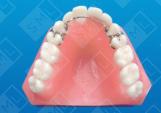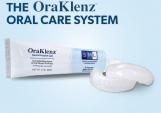A variety of fixed appliances are available to upright tipped molars. Although the design and application may vary slightly, the principles are the same. The key to success is to set up adequate anchorage. In this example, an anchorage unit is created by placing edgewise brackets on all teeth as far forward as the canine. These are then tied together with a segmental guide wire and metal ligature ties. The canine on the contralateral side is also included in the anchorage unit by using a lingual arch, to not only increase the anterior anchorage, but to also help resist against any buccal displacement of the anchor teeth. Although direct bonded brackets are available for the molar as well, it is advisable to band the molar. The actual uprighting of the molar is done with a rectangular helical uprighting spring by first placing the distal side of the spring in the special rectangular slot on the molar band so that the mesial arm will lie passively in the vestibule. Then, simply lift the mesial arm of the spring and hook it over the arch wire in the stabilizing segment. It is important that the hook be positioned so that it is able to slide distally as the molar uprights. A slight lingual bend, placed in the uprighting spring, is needed to counteract the forces that tend to tip the anchor teeth buccally and the molar lingually.













